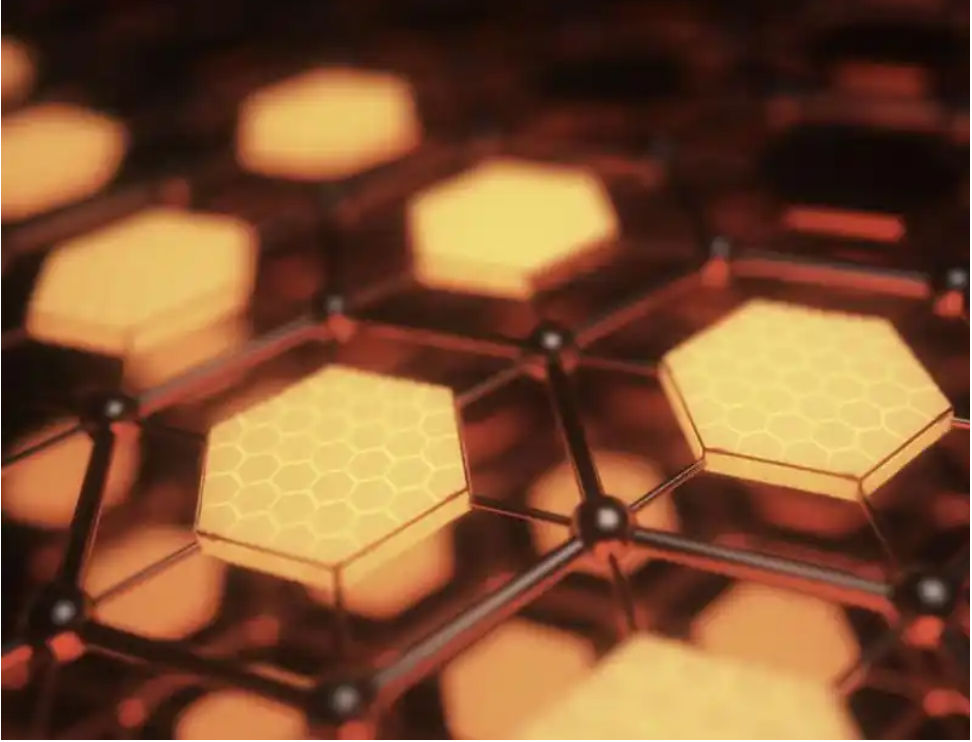Graphene vs Graphite in Thermal Management: What’s the Real Difference?
🌡️ Introduction: Carbon Materials in the Thermal Race
In the world of thermal management, carbon-based materials are gaining massive attention. Two of the most talked-about contenders are graphite and graphene. While they share the same carbon foundation and are often used interchangeably in marketing, they perform very differently — especially in high-end thermal applications.

So, what exactly distinguishes graphene from graphite in thermal conductivity, structure, cost, and usability?
This article compares these two carbon powerhouses and helps engineers and material scientists make informed decisions when designing thermal solutions.
🔍 Section 1: Structural Differences – Flat vs Layered
The most fundamental difference lies in the structure:
| Feature | Graphene | Graphite |
|---|---|---|
| Composition | Single layer of carbon atoms | Stacked layers of graphene |
| Thickness | ~0.34 nm per layer | 1–1000+ layers (bulk) |
| Interlayer Bonding | None (isolated monolayer) | Weak van der Waals bonds |
| Flexibility | Extremely flexible and transparent | Brittle in bulk form |
✅ Graphene is a 2D nanomaterial, while graphite is a 3D layered bulk material.
➡️ This structural difference is the root of their varying thermal and mechanical behavior.
🔥 Section 2: Thermal Conductivity — Who’s the Winner?
Both materials are known for good thermal conductivity, but:
✅ Graphene
-
In-plane thermal conductivity: up to 5000 W/m·K (theoretical), typically 2000–4000 W/m·K in flakes
-
Heat flows extremely fast along the sheet
⚠️ Graphite
-
In-plane: 300–500 W/m·K
-
Through-plane: only 5–20 W/m·K (due to weak interlayer bonding)
-
Often limited by grain boundaries and impurities
📌 Verdict:
Graphene is an order of magnitude more efficient in-plane and ideal for thin heat spreaders or thermal interface layers.
Graphite is better for bulk passive cooling (e.g. as plates or blocks).
🧪 Section 3: Application Suitability by Industry
| Application | Preferred Material | Why? |
|---|---|---|
| Smartphone CPUs | Graphene | Ultra-thin, high in-plane conductivity |
| LED modules | Graphene or Graphene-Graphite Hybrid | Efficient thermal pads and paste |
| EV battery modules | Graphite pads for cost, graphene pads for premium designs | |
| Aerospace electronics | Graphene | Lightweight, flexible, inert |
| Power electronics | Graphite block for structural cooling, graphene paste for interface layers |
👨🔬 Graphene excels in dynamic, interface-heavy scenarios, while graphite dominates in static, bulk heat sinks.
⚙️ Section 4: Processability and Compatibility
-
Graphite
-
Can be machined or pressed into sheets
-
Compatible with industrial thermal pads
-
Stable and inert
-
-
Graphene
-
Can be dispersed into pastes, inks, and composites
-
Ideal for printing, coating, or spraying
-
Requires more delicate handling during production
-
✅ Graphene offers more form factors (inks, films, pastes), while graphite is easier to handle in bulk.
💰 Section 5: Cost and Availability
| Factor | Graphite | Graphene |
|---|---|---|
| Price per kg | ~$2–20 | ~$100–1000+ depending on type |
| Scalability | Mass-produced from natural or synthetic sources | Production still maturing (CVD, exfoliation, chemical reduction) |
| Market maturity | Well-established | Emerging, rapidly growing |
📌 Verdict:
Graphite is cost-effective and scalable, suited for commodity thermal materials.
Graphene is premium, high-performance, and still on a path toward broader affordability.
🔬 Section 6: Hybrid Graphene–Graphite Composites
To get the best of both worlds, many thermal engineers are exploring hybrid systems:
-
Graphene-coated graphite: Enhanced surface conduction
-
Graphene + graphite powder composites: Improved bulk and interface thermal pathways
-
Multilayer laminates: Graphene layers stacked with conductive fillers
✅ These hybrid designs offer:
-
Moderate cost
-
Improved conductivity
-
Better conformability and thermal cycling resistance
Example: GrapheneRich’s composite powders blend small graphene flakes with graphite to deliver a conductivity balance ideal for EV thermal pastes.
🏗️ Section 7: Environmental and Mechanical Behavior
-
Graphene:
-
Chemically inert
-
Stronger under compression and shear
-
Withstands high temperatures and flexing
-
-
Graphite:
-
More brittle
-
Can degrade or delaminate under repeated cycling
-
Still stable under most passive conditions
-
➡️ Graphene offers longer-term durability in demanding conditions like fast charging, frequent temperature shifts, or micro-vibration environments (aerospace, robotics).
📊 Section 8: Performance Snapshot Table
| Metric | Graphene | Graphite |
|---|---|---|
| Thermal conductivity (in-plane) | 2000–5000 W/m·K | 300–500 W/m·K |
| Through-plane conductivity | 5–20 W/m·K (stacked) | 5–20 W/m·K |
| Flexibility | Very high | Low |
| Electrical conductivity | Very high | High |
| Density | ~2.2 g/cm³ | ~2.2 g/cm³ |
| Application forms | Paste, ink, film, spray, foam | Sheet, block, foil |
| Cost | $$$ | $ |
| Customization potential | High | Moderate |
🔮 Conclusion: Choose Graphene for Interfaces, Graphite for Mass
The comparison reveals a clear conclusion:
-
If you need ultra-efficient, thin, and flexible thermal solutions — graphene is the clear winner.
-
If you require low-cost, high-volume bulk cooling components — graphite still delivers.
🚀 For next-generation devices, especially where space and performance matter, graphene-based TIMs and coatings will dominate. Meanwhile, graphite remains essential for conventional cooling structures.
At GrapheneRich NanoTech, we work on composite solutions that combine the affordability of graphite with the performance edge of graphene — enabling smart thermal materials for a wide range of applications.
🛠️ Explore our materials here: https://graphenerich.com/products

